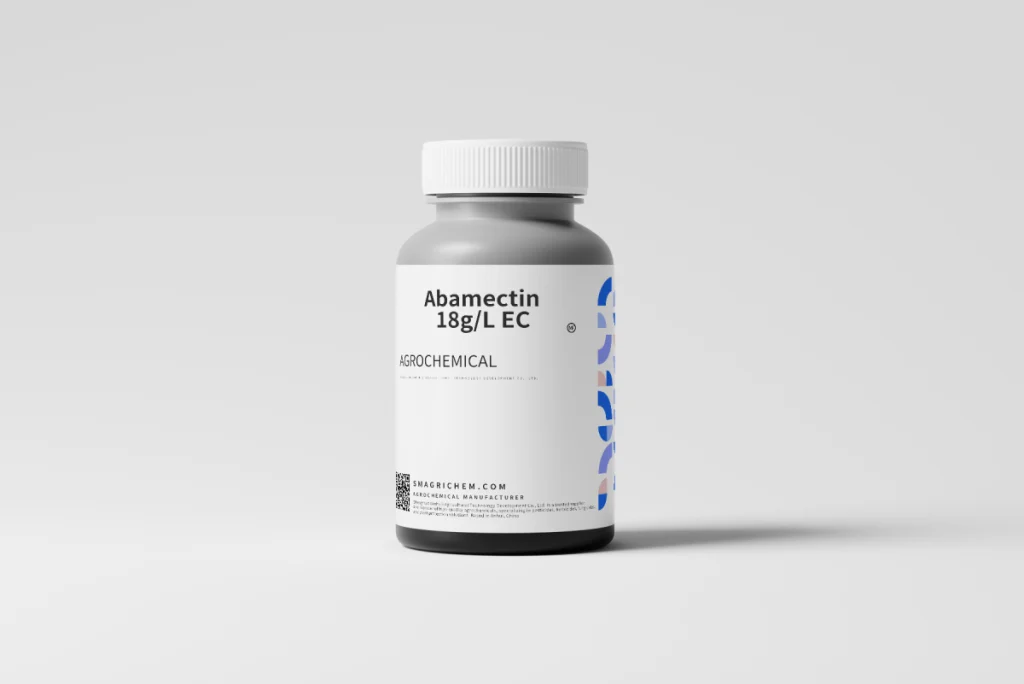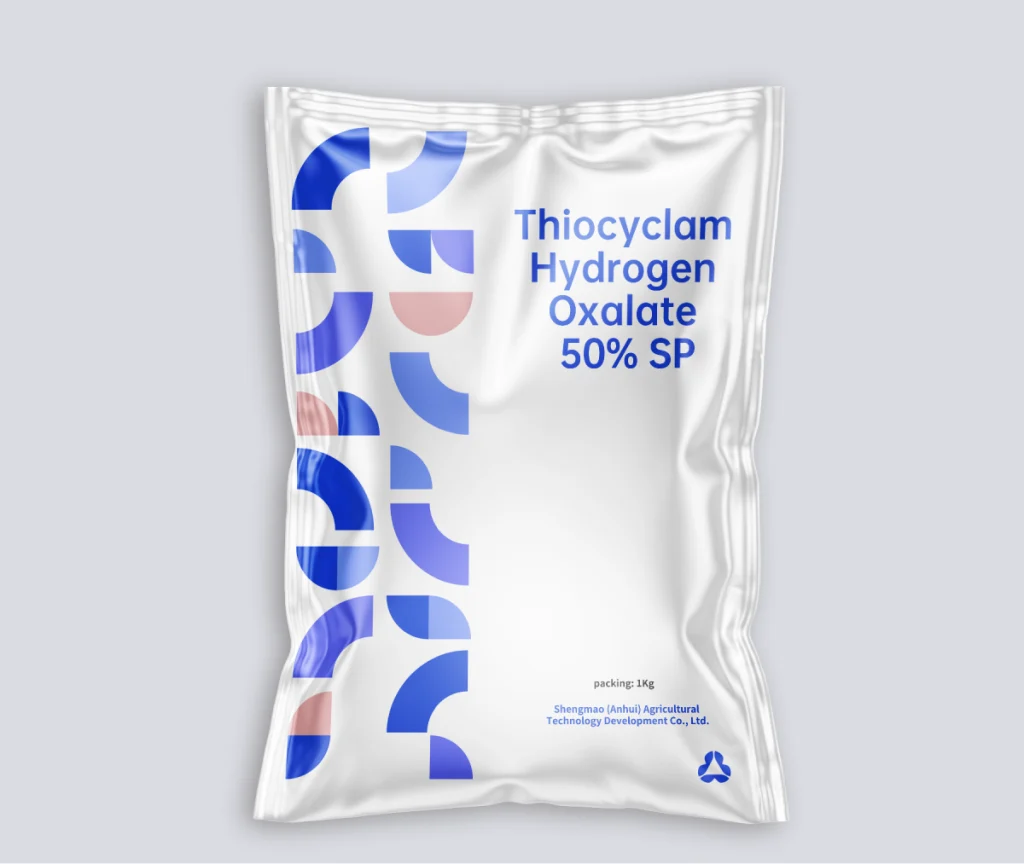Why Choose Shengmao Cypermethrin?
-
Fast-acting neurotoxin: Paralyzes pests within minutes by disrupting their nervous system.
-
Dual-mode of action: Effective through both contact and ingestion.
-
Wide spectrum control: Eliminates chewing, sucking, and flying pests.
-
Flexible formulations: Available in EC, WP, ME, SC, and TC for varied application needs.
-
Low application rate: Delivers cost-effective control with minimal use.
-
Safe when used correctly: Low mammalian toxicity and suitable for integrated pest management (IPM).
-
Global reliability: Trusted in over 30 countries for crop protection and urban sanitation.
Mode of Action
Cypermethrin mimics natural pyrethrins but with superior stability and potency. It targets voltage-gated sodium channels in insects, causing:
Two pathways ensure high mortality:
-
Contact Poisoning: Penetrates through the exoskeleton when pests walk across treated surfaces.
-
Stomach Poisoning: Ingested while feeding on treated crops or surfaces, disrupting feeding and motor function.
It provides quick knockdown, visible within hours, without systemic absorption into the plant—ideal for surface-targeted control.
Target Pests
Agriculture – Field & Horticultural Crops
| Crop |
Pests Controlled |
| Cotton |
Bollworm, aphids, leafhoppers |
| Rice |
Stem borer, leaf folder, gall midge |
| Corn |
Armyworm, cutworm, maize borers |
| Soybeans |
Caterpillars, aphids |
| Vegetables |
Thrips, beetles, whiteflies |
| Fruit Trees |
Fruit borers, aphids, mites |
Stored Product & Warehouse Pests
Public Health and Household Pests
-
Mosquitoes & Flies: Treated walls, drains, livestock areas
-
Cockroaches & Ants: Kitchens, storage rooms, cracks
-
Bedbugs, Lice & Fleas: Homes, shelters, transportation
-
Pet Area Sanitation: Animal pens and bedding zones
Application & Dosage Guidelines
Agricultural Use
| Crop |
Dosage (10% EC) |
Application |
| Cotton |
300–400 ml/ha |
Foliar spray during egg stage |
| Rice |
250–350 ml/ha |
Early larval stage |
| Corn |
300–450 ml/ha |
Uniform foliar spray |
| Soybeans |
200–300 ml/ha |
Full canopy spray |
| Vegetables |
250–300 ml/ha |
Spray both leaf surfaces |
| Fruits |
200–250 ml/ha |
Mist or air-blast spray |
Tip: Spray early morning or late afternoon. Avoid use during high winds or strong sunlight.
Knapsack Sprayer Dilution
-
General Use: 1–1.5 ml/L of water
-
Tough Pests: Up to 2 ml/L
-
For 15L sprayer: Mix 15–30 ml depending on pest pressure
Grain Storage
| Surface |
Rate |
| Walls, floors |
25 ml/L per 10 m² |
| Empty bins |
Uniform misting |
| Sacks |
Light mist, surface only |
Sanitation & Household Use
| Area |
Dosage |
| Indoor corners |
20–25 ml/L |
| Wall surfaces |
30 ml/L |
| Drainage zones |
10–15 ml/L |
| Livestock shelters |
25–40 ml/L depending on load |
Safety Note: Always wear appropriate PPE. Avoid spraying near open water. Shake well before use. Rotate with other insecticide classes to prevent resistance.
Product Advantages
1. Wide-Spectrum Efficacy
-
Effective against 100+ pest species
-
Suitable for crops, storage, livestock, and urban environments
2. Quick Knockdown & Long Residual
3. Dual Action Delivery
4. Resistant to Environmental Stress
-
Photostable under sunlight
-
Works in humid, dry, or temperate climates
5. Cost-Effective
6. Multiple Formulations
-
Available in EC, WP, ME, SC, TC
-
Compatible with other pesticides and foliar feeds
7. Resistance Management
Professional-Grade & Customizable
Shengmao Cypermethrin Insecticide is tailored for bulk orders and B2B distribution. We support:
Whether you are a distributor, agricultural co-op, or pest control provider, Shengmao empowers your brand with globally trusted formulations.
Frequently Asked Questions (FAQ) – Cypermethrin Insecticide
Q1: What is Cypermethrin insecticide used for?
Cypermethrin is a fast-acting, broad-spectrum synthetic pyrethroid insecticide. It is widely used for pest control in agriculture, public health, stored grain protection, and household applications. It effectively targets pests like aphids, beetles, caterpillars, thrips, mosquitoes, flies, cockroaches, and more.
Q2: What does Cypermethrin kill?
Cypermethrin controls both chewing and sucking insects, such as:
-
Bollworms, cutworms, beet armyworms
-
Aphids, whiteflies, leafhoppers
-
Rice stem borers, thrips
-
Mosquitoes, flies, ants, and cockroaches
It works by attacking the insect’s nervous system, causing paralysis and death within hours.
Q3: How does Cypermethrin work?
Cypermethrin disrupts sodium channels in insect nerve cells, leading to overstimulation of the nervous system. This results in muscle spasms, disorientation, and ultimately death. It is effective through both contact and ingestion.
Q4: What is the recommended Cypermethrin dosage per litre?
For field application using Cypermethrin 10% EC:
-
Use 1 to 1.5 ml per litre of water for standard pest control
-
For severe infestations, increase dosage to 2 ml per litre
Always follow the product label and adjust based on crop type and pest severity.
Q5: How long does Cypermethrin remain effective after spraying?
Cypermethrin typically offers residual protection for 1 to 3 weeks, depending on:
-
Weather conditions (sunlight and rain can reduce efficacy)
-
Surface type (lasts longer on non-porous surfaces)
-
Pest population density
Indoors or in shaded areas, its effectiveness may persist longer.
Q6: Is Cypermethrin safe for humans and animals?
When applied according to label directions:
-
Cypermethrin is considered low in toxicity for humans and warm-blooded animals
-
Always wear protective clothing and equipment during mixing and spraying
-
Highly toxic to fish, bees, and aquatic organisms—avoid use near water bodies and during flowering
Q7: Can Cypermethrin be mixed with other pesticides?
Yes, Cypermethrin is compatible with many pesticides and fungicides such as imidacloprid, mancozeb, and carbendazim. However:
-
Always perform a jar test to check physical compatibility
-
Avoid mixing with alkaline solutions, which may degrade its effectiveness
Q8: Can insects develop resistance to Cypermethrin?
Yes, frequent use without rotating insecticides can lead to resistance. To manage resistance:
-
Rotate Cypermethrin with other insecticide classes like neonicotinoids or organophosphates
-
Limit the number of applications per season
-
Practice Integrated Pest Management (IPM) strategies to reduce reliance on chemicals




